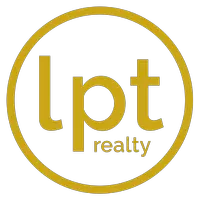What Mortgage is best for you?

7-Year ARM vs. 30-Year Conventional vs. the New 50-Year Mortgage: What You Need to Know Before You Buy a Home
When you’re buying a home, the mortgage you choose becomes part of your life story. It shapes your monthly budget, your long-term financial picture, and how quickly you build equity. And with interest rates still holding firm and chatter building around the new proposed 50-year mortgage, a lot of buyers are trying to make sense of their options.
Let’s break it down the way I’d explain it to a friend across the kitchen island — simple, straight, real talk.
The 7-Year ARM (Adjustable-Rate Mortgage)
What It Is:
A 7-Year ARM gives you a fixed interest rate for the first seven years. After that, it adjusts annually based on the market.
Pros:
-
Lower interest rate upfront → lower monthly payments early on
-
Great for buyers who know they’ll sell, refinance, or move within that 7-year window
-
Helps free up cash in those first years (maybe you’re furnishing the home, remodeling, or just want extra breathing room)
Cons:
-
After Year 7, the rate can go up — sometimes significantly
-
Budgeting long-term becomes harder
-
If you don’t refi or move, you might end up paying more over time
Bottom Line:
A 7-Year ARM works for buyers with a plan: “I’m here for now, but not forever.” It’s strategy-driven.
The 30-Year Conventional Fixed Mortgage
What It Is:
The classic. Stable. Predictable. Same rate from day one to year thirty.
Pros:
-
Payment stays the same every single month
-
Easier long-term planning
-
You can still pay extra toward the principal anytime
-
Great balance of affordability and stability
Cons:
-
Higher payment compared to a 50-year or a 7-year ARM upfront
-
You’ll pay more total interest over 30 years than you would on a shorter loan
-
Slowest early equity build (big chunk of your first payments go toward interest)
Bottom Line:
The 30-year fixed is the “home sweet home” loan. Perfect for buyers who want stability and expect to stay put.
The New Proposed 50-Year Mortgage
What It Is:
A long-term mortgage stretched over 50 years. Still emerging, not yet widely available, but it’s being talked about loudly — especially as affordability becomes a challenge for many buyers.
Pros:
-
Lowest monthly payment of all three
-
More flexibility in your budget
-
Can help buyers qualify for more home
-
Creates breathing room for homeowners who need cash flow
Cons:
-
You’ll pay a lot more interest over the life of the loan
-
Equity builds very slowly
-
If you sell before building enough equity, you may walk away with less net
-
Because it’s new, terms may not be as competitive as established loan programs
Bottom Line:
A 50-year mortgage is a payment-smoother, not a wealth-builder. It can make a home more attainable, but it stretches the timeline significantly.
So Which One Is Right for You?
Here’s the way I lay it out for clients:
If you want flexibility today:
A 7-Year ARM may give you the lowest payment early on — perfect if you expect to refinance, relocate, or upgrade later.
If you want long-term predictability:
A 30-Year Fixed is your steady, reliable partner. It keeps your budget steady and ties into long-term financial planning.
If you need the lowest monthly payment possible:
A 50-Year Mortgage could open the door, but you have to be comfortable with the slow equity build and long commitment.
My Real-World Advice
Homes aren’t just investments — they’re where life happens.
Your mortgage should support your home, not strain it.
If a loan gives you more breathing room but slows your equity, you need a plan for what you’ll do with that extra cash. And if you choose a long-term stable loan, you’re trading flexibility for security — and that’s often the smartest move for families building a future.
No matter the loan type, you can always accelerate the equity by making extra principal payments when you’re able. That’s the hidden power move.
Thinking About Buying or Refinancing?
I’m here to walk you through every option in plain, real-world language — no fluff, no pressure, just clarity.

"Molly's job is to find and attract mastery-based agents to the office, protect the culture, and make sure everyone is happy! "
GET MORE INFORMATION

